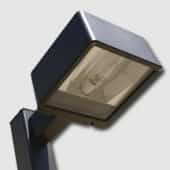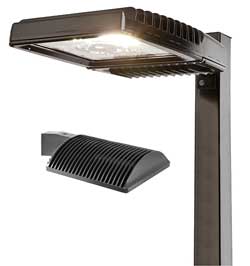Municipalities are always in search of a better street light, whether “better” means more efficient, more functional or more reliable. 
The Future of the Street Light

- LEDs are, by far, the most efficient fixtures on the market. Current LED models can output about 80 lumens per watt, and in the near future, LEDs that output 100 lumens per watt will be available. High intensity discharge lamps cap out in the high 50s per watt, which is better than incandescent fixtures, but a far cry from LEDs.
Consider this awe-inspiring fact provided by a report in the New York Times: If all of the fixtures in the U.S. were converted to LEDs, it would cut energy expenditures for lighting in half.
- LEDs offer a number of extra functions due to their added controllability. For example, it’s extremely difficult to dim discharge lamps or fluorescent lamps, but LEDs, because they run on solid state electronics, can be precisely dimmed. This offers some interesting applications. For instance, an LED street light can be kept at a dimmed state until someone walks by, and then the LED can be brightened. Or, the output level can be programmed to change with the time of the day, or the day of the year, maximizing efficiency in this way. Some cities have even tied their LED pole fixtures to emergency response systems, and can have fixtures near the emergency blink to make it easier for personnel to navigate to the crisis.
- LEDs last much longer than any other fixture, reducing maintenance costs. LEDs are durable, capable of withstanding any weather. And because they don’t create illumination through resistance or exciting pressurized gases, they put less wear on fixture components. It’s normal for an LED to provide 50,000 or more hours of performance, which is several times greater than metal halides and gas discharge lamps. Maintenance is kept at a minimum, and therefore, so is cost.
- LEDs don’t emit illumination on the YV spectrum, so they don’t attract bugs. Maybe not a huge benefit, but no one likes swarming bugs, so that’s another nice advantage.
Change comes slowly in the world of infrastructure, but the allure of LED fixtures cannot be denied. They are, in every way, a major upgrade over older systems.






